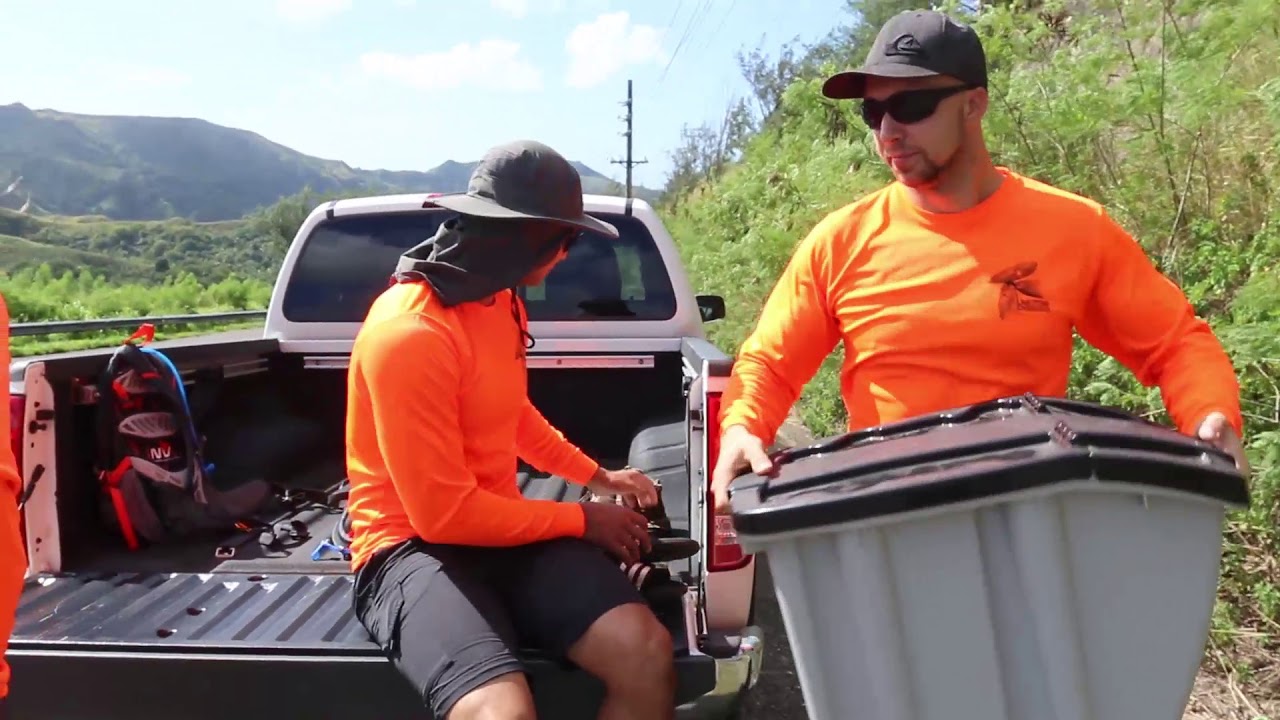Biodiversity on Guam was thriving about 4,000 years ago. It was not until the first arrival of humans when the island first felt the scorching flames of fire and the health of island environments began to fall.
According to archaeologist Bart Lawrence, Ph.D., charcoal remnants in soil layers reveal humans first introduced fire to the island for agricultural purpose known as a slash and burn technique.
According to ecologist Dwayne Minton, Ph.D., up to 10% of Guam’s area is burned by anthropogenic fires, meaning they originate from human activity.
The National Park Service confirms that the island lacks conducive natural or spontaneous ignition sources. In order for wildfires to occur spontaneously in nature, humidity should fall below 25%. Guam’s humidity levels average above 80%.
The distance from the land and sea creates a disconnect of the impending danger that fire poses to Guam’s island terrestrial and marine ecosystems. What is done to land in the ridge impacts what happens to the reef.
Guam Department of Agriculture Forestry and Soil Resource Division Cooperation Fire Protection Program Manager, Christine Fejeran, said: “It’s all connected. Fire in the ridge is smoke in the village. Smoke in the village is a 911 call because someone can’t breathe. It’s all connected. Fire in the ridge is sediment in the river. Sediment in the river is Ugum water treatment plant being shut down. It’s all connected.”
Significant negative effects of fires on the island are an increase in erosion and badland formation. Badlands are brown sore spots of land devoid of vegetation. Without plant life and root systems in place, sedimentation easily washes downstream into the watershed and pollutes the water.
In 2002, local fishermen noticed a decline in the sizes of their catch due to accelerated erosion that followed construction development throughout the 1980’s and 1990’s. Sediment harms corals by directly smothering them and by blocking out sunlight in the water column preventing them from producing 90% of their energy through photosynthesis. With an increase in sediment runoff, coral reef health declines along with the fish population.
Wildfires also lead to a decline in native species. After every fire, the health of the trees and plants in that ecosystem diminishes. Burning native species gives invasive species the opportunity to take root and overcome them.
Data reveal that in 2016, there were 770 fires on Guam, resulting in 6.2% of the islands area scorched. Last year Guam suffered from 398 fires leaving about 2.8% of the islands area burned. To alleviate these damages local organizations partake in restoration efforts.
[embedyt] https://www.youtube.com/watch?v=yfF-kXssDSo[/embedyt]
A technical report released by WERI in March 2010 concluded that arson was the cause of most wildfires on Guam. A majority of these fires occur in the southern region of the island. These grassland fires are historically tied to arson specifically for poaching purposes.
Poachers set fires with the intention to attract deer. The deer are drawn to the new grass shoots that grow after an area is burned. Down south, fires are frequently set in areas including Leo Palace, Dan Dan Malojloj, Ija Inarajan, Umatac and Merizo.
Joey San Nicolas, chief of the Guam Fire Department believes arsonists are aware of the threats burning has to the island ecosystems and local community.
“The area burned is abundant in wildlife and when the new sprouts of vegetation grow, it attracts the game into open areas. I believe they know very well the impacts including government resources expended, dangers to surrounding properties and persons, and the environment, regardless they continue to burn these areas,” said San Nicolas.
In recent years only a low number of suspected arsons have been charged and prosecuted. San Nicolas believes a lack of arrests plays a role in allowing arson-caused wildfires to persist.
Mark Aguon, chief of Guam Department of Agriculture Forestry Enforcement, expresses frustrations with the difficulty in arresting arsonists. Aguon explains that the law makes it hard to conduct an arrest because authorities are required to witness the suspect physically light a fire.
Aguon said: “Even if we are to see a lone jeep leaving a path where the fire started, we cannot arrest them because we did not see it. Even if they have soot on their hand, We have brought it up to officials before.”
Guam Law 5GCA Ch 63 subsec 63403 states: “It shall be unlawful for any person to start, or allow a fire to extend, onto government land or the land of another causing damage or destruction to plant or animal life or to any property thereon. Any person violating this Section shall be guilty of a misdemeanor.”
The Guam Forestry conservation officers patrol the southern part of the island on the lookout for signs of fire or illegal activity.
They put out the savanna fires, however they do not conduct arrests. Arrests are made by forestry law enforcement.
San Nicolas shared an example of the difficulty in making an arrest or charge for arson.
San Nicolas said: “We had evidence of a large rock wrapped in a newspaper was partially burned and determined to be the cause of the fire. The evidence was found near Rt 17 where a passer-byer could have simply thrown it from a moving vehicle. No further leads were determined and therefore case remains cold.”
“Real hunters don’t burn because many hunters are fishermen too and they know they are ruining their chances in the water,” said Guam Department of Agriculture Forestry and Soil Resource Division Cooperation Fire Protection Program Manager, Christine Fejeran.
The Guam Fire Departments is currently working with Legislature to update the Fees and Fines schedule which would provide a significant impact and deterrence for criminal arson activity.

